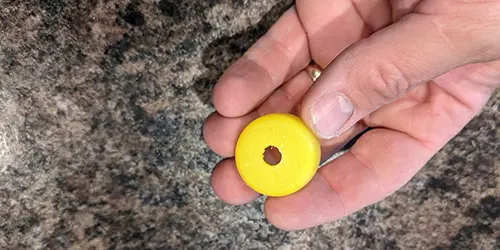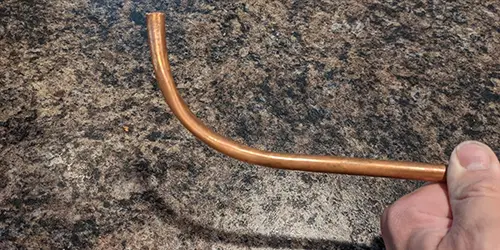Water is the most critical resource for humans aside from shelter, and we can only survive around three days without it.
The problem with water is that most of the freshwater we find in our environment holds the potential to harbour dangerous pathogens.
Therefore, it is critical that we have the ability to purify any water that we find to render it safe for us to drink.
Disclaimer
The water purifier that I am going to detail here has not been laboratory tested and should only be built and put into use in an actual SHTF situation.
This water purifier relies on the water to be heated to a point in which pathogens would be killed, and failure to achieve this will render this water purifier ineffective.
You, the reader, assume all risks in the construction and use of this purification system.
How This Water Purifier Works
The water purification system that I am about to describe employs a two-stage filtration.
The first stage uses cotton balls, sand, gravel, and small river rocks to filter debris and sediment from the water with a layer of activated charcoal to bind to toxins and chemicals.
After this stage, the water passes through a heated copper coil, which heats the water to boiling, killing all pathogens in the water. The combination of both stages should render most water safe to drink.
⇒ Click Here For The Awesome DIY Device That Turns Air Into Fresh Water
What Will the 20 Dollar Water Purifier Remove?
The first stage of filtration will remove a lot of foreign matter from the water, making it look much clearer.
The sand will also help filter out some bacteria, parasites, and other pathogens but not enough to render the water safe to drink. The activated charcoal will bind with chemicals and toxins with the added benefit of making the water taste much better.
The second stage of the purifier is designed to bring the water passing through the copper tube to the boiling point, killing any pathogens in the water.
Therefore, it is essential that the water that exits the copper coil be very close to 100 degrees Celsius at sea level, because this is the only point you can confirm that the process is working.
Building the Twenty Dollar Water Purifier
Most of the items you will need for this build are probably lying around your home or garage, with the only pieces needing to be purchased being the flexible copper pipe and the activated charcoal.
I was able to put this together in less than an hour, and the process was relatively straightforward, requiring only basic tools and knowledge.
Tools Required
- Drill and drill bits
- Saw
- Scissors
- Epoxy
Materials
- Sand and gravel
- Cotton balls
- Activated charcoal
- Flexible copper pipe
- 2×4’s and screws
- Alcohol stove
- Soda bottles
Instructions
- Cut the bottom off the soda bottle, then drill a hole into the cap that is large enough to provide a tight fit around the copper tubing.

- Wind the copper tubing into a coil. The tighter the coil, the more effective you will be able to heat the water to boiling.

- Bend the upper end of the coil up at 90 degrees.

- Bend the lower end down slightly to facilitate filling a container with clean water.

- Place the cap onto the copper pipe.

- Epoxy the cap to the pipe to prevent leaking.

- Build a frame to hold the coil high enough that you can place a stove underneath it.

- Attach the upper end of the coil to the frame. Either use metal stapping or screws. It must be secure enough that the first filter stage will not rotate or spill when full of filter media and water. I was able to accomplish this with only a few screws, but you may need to use other more secure methods.

- Place the stove underneath the coil.

- Place cotton ballsin the neck of the soda bottle.

- Place the activated carbon, sand, and gravel into the soda bottle in layers.


- Light the stove.

- Pour water into the first filter stage and check the temperature of the water coming out of the other end.

- When the water coming out is boiling hot, you can place whichever bottle you wish at the outlet to capture the clean, purified water.

Points to Note on the Twenty Dollar Water Purification System
- You can use a large can to hold the coil and stove, which will increase the amount of heat that will be put into the coil.
- The copper coil could also be wrapped around the stove pipe of a wood stove.
- In my case, I did not coil the copper as tight as I should have, but I could still get good results from the system. So I would suggest coiling the copper as tightly as you are able.
- Adjust the position of the stove until you get the best results.
- To prevent kinking in the copper tube, fill the tube with sand and seal off both ends. This will provide support for the tubing walls, preventing them from collapsing during the bending process.
- When fabricating the copper coil, it helps to have some sort of form to coil the tubing around. Pick a cylindrical object of similar diameter as the stove that you are going to use. PVC or ABS pipe, water bottles, or canned food are all excellent options.
- If you do not have an alcohol stove, you can make one or use whichever stove you have available. Do not use a wood-burning fire because it will not give out a consistent level of heat.
Related: Is It Legal To Harvest Rainwater In Your State?
The two-stage water purification system that I have detailed here is a good option for an emergency situation where all of your other water filtration and purification options have been rendered useless or no longer available.
However, while it will work well in theory, it is worth mentioning again that there is no laboratory evidence as to the level that it will purify water. Therefore, I make no claims as to its true efficacy.
This article first appeared on Ask A Prepper.
You may also like:
Are You Ready for a Long-Term Water Emergency?
Do You Make These Fatal Mistakes in a Crisis? (Video)
How To Make A Water Pump In Your Backyard
How You Can Find Out If Your Homestead Water Is Polluted Or Clean










Wouldn’t it be easier to simply boil the water?
I agree with Tamara. This is how you distill alcohol, in reverse. If you were going to go through this kind of headache and wanted to be sure the water hit the boiling point, it would make more sense to run it by heating the water until it boils, turning to vapor. With an alcohol distillation configuration, it would channel the vapor into the copper coils. As the water vapor passes through the coils, it would slowly cool, returning to a liquid. It would then drip out of the tubing into the collection container. This would eliminate the filtration system all together, as all sediment and any substance unable to convert to steam, would be left behind. Filtering the water through charcoal may be beneficial regardless.
What in the methamphetamine is this crap? This is the least efficient use of fuel/energy possible, and in a SHTF situation, you can’t be wasting anything. It’s also a surefire way to get yourself sick since there is no way to guarantee the temperature stays above boiling because the faster water flows the cooler the copper becomes. The people above me are correct. Just boil the water and collect the steam. If, god forbid, you are in some weird situation where you only have plastic bottles, copper tubing, some two-by-fours, and a burner, then at least coil the copper in a disc shape to catch more heat. smdh.